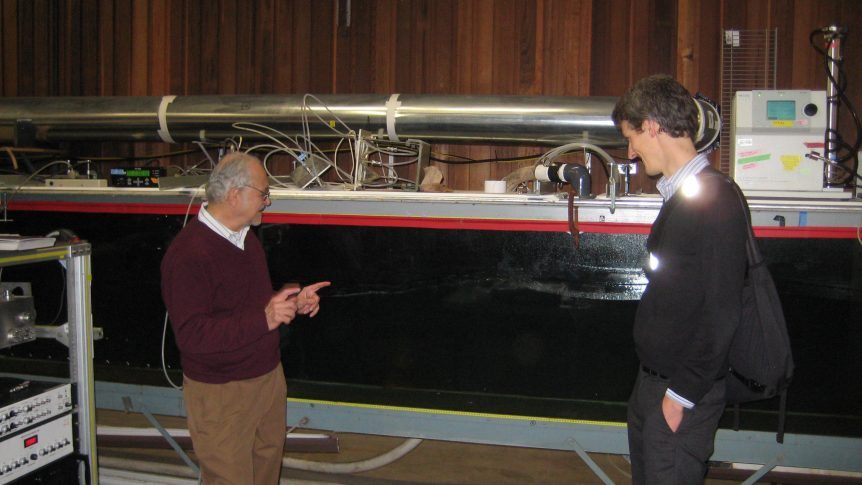About 1.5 years ago, a collection of chemistry faculty from UC San Diego proposed to NSF to bring the real world into the lab so we could study complex atmospheric chemistry processes under controlled conditions. We created the Phase I Center for Aerosol Impacts on Climate and the Environment which has the primary goal of advancing our understanding of how fundamental chemical processes affect climate. Scientists have been working for many decades trying to understand the chemistry of our atmosphere. However, uncontrollable changes happen very quickly in the atmosphere due to many intertwined processes, making it impossible to sort out which factors actually determine the chemical make-up of our atmosphere. The atmosphere represents just one compartment of our environment (air, land, ocean) but it has become a central focus given the fact that it is changing at an unprecedented rate, due to the build-up of pollutants from our growing human population which should hit 7 billion on October 31! Knowledge of the identity of species in our atmosphere and the factors that control their concentrations represents one key piece of a complex puzzle that we need to understand in order to explain and hopefully control our changing climate and fix our poor overheated planet. In Phase I of our experiments, the overall goal is to bring the ocean, which represents 71% of the surface of the earth, into the lab so we can control and measure chemical reactions to better understand how natural species in sea spray affect our clouds and climate. Looking back and knowing all we have learned in the past year, we realize that accurately simulating ocean processes in a lab setting was a very tall order. Accurately simulating the ocean and breaking waves is no simple task, and it took almost a year to get the system working well; only with the help of dedicated oceanographers from SIO, who have been studying air-sea exchange for years, has our ocean-atmosphere simulator become a reality.

Profs. Mario J. Molina and Timothy H. Bertram watching an individual wave break in ocean-atmosphere wave flume that will be used for CAICE studies over the next 2.5 weeks.
Now that we have this system in place (see picture on left with Profs. Mario J. Molina and Tim Bertram), there is so much we can learn about the chemistry of our ocean and atmosphere and how they impact one another! One major lesson we have learned so far is that the way others have been trying to simulate ocean processes produces sea spray that is not representative of marine particles in the natural environment. So, any results one obtains on these particles cannot be extrapolated to explain or predict atmospheric processes. We now overcome this impediment and established a reproducible way to create and study sea spray in the lab. Now we can, in a very systematic manner, make changes to ocean chemistry by adding ocean “critters”, for example, studying the true chemical complexity of the sea spray and determining how this affects properties that are important to climate. Now, scientists with some of the best analytical and atmospheric chemistry instruments in the world will be visiting SIO over the next 2.5 weeks to sample sea spray from our ocean in the SIO hydraulics lab, studying how effectively the particles form clouds, undergo heterogeneous reactions, as well as details on their chemical complexity at the microscopic level using a wide array of techniques (we will discuss these in future blogs!). Well, I have goose bumps as I write this as the big “field study” intensive is finally upon us after months of arduous preparation by many dedicated students and postdocs. What an amazing team we have working on this project! I personally feel blessed to be directing a Center with such wonderful colleagues, students, and collaborators. Other scientists are now arriving and setting up their instruments and the actual study starts on Halloween. Stay tuned. We will have the other scientists involved writing the blog each day. Thanks for following us through this exciting chemical adventure. It you are in the San Diego area between Oct 31 and Nov 13, please come visit us and see the project in action!
Professor Kim Prather; Director, Center for Aerosol Impacts on Climate and the Environment

